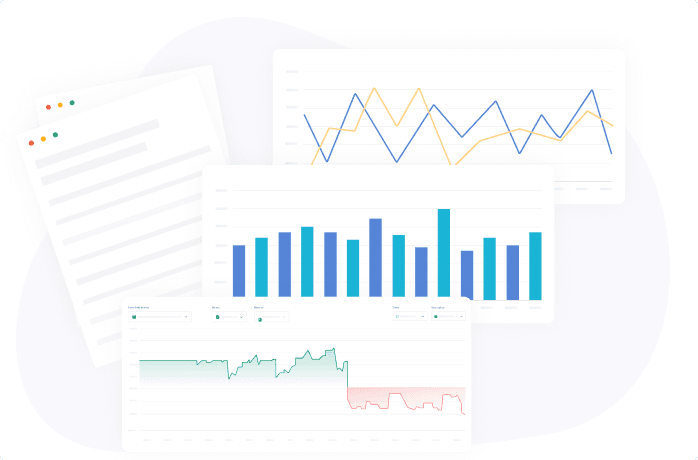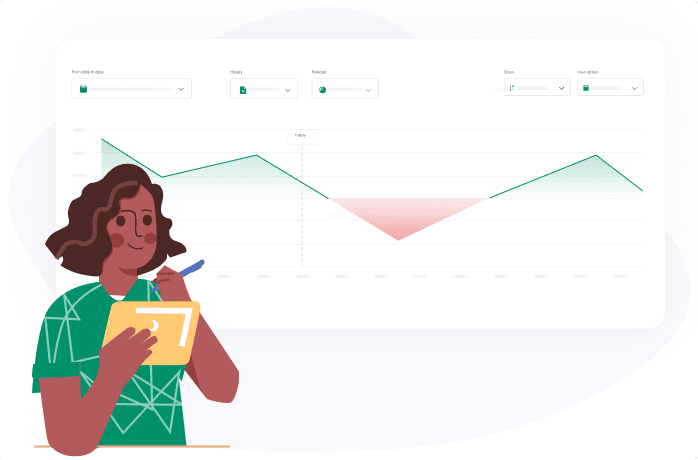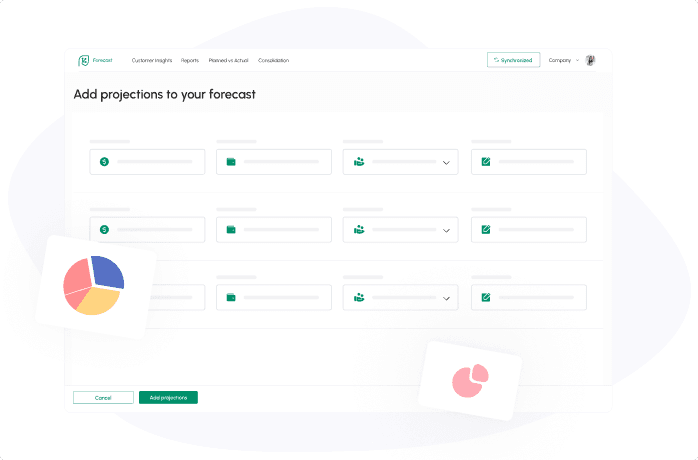

Managing cash flow in a seasonal business is difficult. You may have a lot of money coming in for three or four months, and then it slows by 50% or more. In this scenario, it’s imperative to know the most common seasonal cash flow problems and then work to rectify them.
First, let’s consider the unique features and aspects of a seasonal business before going into management tips and techniques.
Features and Aspects of a Seasonal Business
Seasonal cash flow accounting is difficult because:
- Lots of money comes into the business during a short time period
- Utilities and bills continue even during slow periods
- Hiring may be needed for every new busy season
Your costs may be lower during non-busy seasons, but you’ll also have a lot of difficult decisions to make. For example, you may need to decide if the business is worth keeping open during slow periods or if you can keep on all of your workers.
Cash flow seasonal mistakes can have a ripple effect throughout the business if you make them early on after the busy season ends.
Additionally, cash flow in a seasonal business can be impacted due to issues outside of your control, such as economics or climate. In this case, if you didn’t put money aside in a high season, you may find your business doesn’t have the cash flow to continue its operations.

Cash Flow Management Techniques For Your Seasonal Business
Managing your cash flow in any business is difficult. However, you can apply certain techniques and tips for managing your cash flow to any business. If you’re running a seasonal business, the following tips can help make sure that you have a strong financial standing season after season.
Top Tips For Managing Cash Flow In A Seasonal Business
We’re going to recommend a lot of great tips that you can follow to maintain positive cash flow even in your seasonal business, starting with one that is arguably the most important.
Identify On And Off Seasons
Every business has ups and downs, and it’s up to you to use the data you have available to do two things:
- Identify your “on” season. The on season will be your busy season where you make the most money. You can use your historical financials to determine when the busy season is and adjust spending accordingly. Don’t know when busy season is and don’t have data to use? Conduct market research.
- Identify your “off” season. An off season may be dramatic to the point of no money coming into the business, or it can be a time when revenue slows greatly. Use the steps in the last point to define the off season.
Once you identify these seasons, it’s time to begin monitoring your cash flow.
Monitor The Cash Flow Of Your Business
Cash flow in a seasonal business must be monitored. You'll need to keep tight constraints on your cash flow to ensure that you’re not spending too much money too quickly. Ideally, you’ll use software that will:
- Create weekly cash flow reports
- Generate monthly reports
- Offer real-time cash flow monitoring
Managing and monitoring your cash flow are two of the most important things you can do for your business. If you find cash flow is falling too much to be feasible in the long term, you can secure financing or find ways to cut back on expenses.
Put Money Aside In High Season
Seasonal businesses go through high and low periods. To prepare for those low periods, put money aside when times are good.
During your busiest season, you should have a surplus of cash that you can tuck away and use during your off season. This strategy is often seen in high cash flow businesses, where steady revenue streams allow companies to save and invest for slower periods. These savings can help you stay afloat when sales wane during your slow periods.
Place these funds in your business bank account and allocate them for use during your off season.
Create Best- and Worst-Case Scenario Plans
Managing cash flow in a seasonal business should include scenario planning. What-if scenario planning can help you prepare for the worst and best outcomes.
- In best-case scenarios, you can invest in growth.
- In worst-case scenarios, you can make quick decisions to avoid disastrous outcomes.
Every business should engage in best- and worst-case scenario planning and have different plans in place to handle each of these scenarios. For seasonal businesses, it’s even more important to focus on scenarios because of the unpredictable nature of the business.
Establish Good Relationships With Suppliers
Building and maintaining good relationships with suppliers is an important part of doing business. When you remain in good standing with your suppliers, you can negotiate lower prices or work out a credit arrangement for your slow periods.
Having a good relationship with your suppliers can also reduce the risk of a surprise “breakup” that forces you to find a new supplier who charges more.
Build A Cash Cushion
Cash flow in a seasonal business fluctuates throughout the year. One way to manage your cash flow effectively is to build up a cash cushion. Essentially, you’re creating an emergency fund for your business that you can use to get through your slow periods.
To build up a cash cushion:
- Start by creating a goal for how much you want to save. Consider when your slow period starts and how long it lasts. How much cash do you need to get through this period? Set your goal higher than this to give yourself some flexibility.
- Put leftover cash into your cash cushion.
- Cut back on expenses and put those savings into your fund.
Consider placing your funds in a business savings product that will generate interest while you build up your cushion.
Having a cash cushion will give you peace of mind that you will have enough cash to cover operating expenses during the off-season.

Find Ways To Create Off-season Demand
The biggest issue with cash flow in a seasonal business is that demand wanes and sales decline after the high season.
One way to improve your cash flow during these slower periods is to find ways to create demand. For example, if you own a landscaping company, winter may be your slow season. During this season, you may offer discounts or special services to prepare customers’ landscaping for spring and summer.
Creating demand during the off-season can help improve sales during these periods and reduce the risk of a cash shortage.
Successfully Manage Your Company’s Cash Flow with Cash Flow Frog
Managing cash flow in a seasonal business can be challenging, but Cash Flow Frog can simplify the process.
It’s easier to avoid cash shortages when you’re prepared and can predict when they may occur. That's exactly what Cash Flow Frog can help you do.
With Cash Flow Frog, you can create:
- Accurate cash flow forecasts to identify your high and low seasons
- Scenarios to see how your cash will be affected by your decisions
- Multiple perspectives to project your cash flow far into the future
Cash Flow Frog uses data from your accounting software to ensure your forecasts and scenarios use accurate data.
Cash flow management is important for every business, but it’s even more important for seasonal businesses that may experience prolonged slow periods. With the right tool, you can take steps now to ensure that you have enough cash to stay open even during the slow season.
Related posts:
You may be interested:
New:













